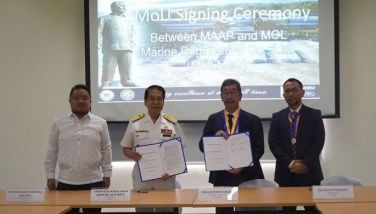Nike cuts ties with Livestrong
AUSTIN, Texas — Nike, which helped build Lance Armstrong's Livestrong cancer charity into a global brand and introduced its familiar yellow wristband, is cutting ties with the foundation in the latest fallout from the former cyclist's doping scandal.
The move by the sports shoe and clothing company ends a relationship that began in 2004 and helped the foundation raise more than $100 million, making the charity's bracelet an international symbol for cancer survivors.
Celebrities and rock stars sported them on stage. Politicians wore them on the campaign trail and in the White House. And with Armstrong dominating the Tour de France, the trendy little pieces of plastic helped Livestrong pump millions of dollars in cancer survivor programs and spawned countless imitations.
But the relationship soured with revelations of performance-enhancing drug use by Armstrong and members of his U.S. Postal Service team.
Nike said Tuesday it will stop making its Livestrong line of apparel after the 2013 holiday season. Foundation and company officials said Nike will honor the financial terms of its contract until it expires in 2014.
Those terms were not disclosed, but the loss of revenue could have a huge financial impact on the charity. The partnership with Nike generated more than $100 million of the roughly $500 million raised by Livestrong since it was founded in 1997.
"While 2013 will be tougher than past years, the Livestrong Foundation views it as a rebuilding year in which it charts a strong, independent course," the charity said in a statement.
Experts were divided whether Nike's withdrawal would cripple the charity.
"It's very damaging. It's a significant signal to the market place that if your largest supporter says 'I'm going to check out,' it's something that is likely to continue to spiral," said Kelly O'Keefe, professor of brand strategy at the Virginia Commonwealth University Brandcenter.
Leslie Lenkowsky of Indiana University's School of Public and Environmental Affairs, said Livestrong can survive because it has a solid organization that established a distinct identity among cancer-fighting groups.
"Losing Nike's sponsorship by no means signals the end of Livestrong," Lenkowsky said.
The charity insisted it remains on solid financial ground.
"This news will prompt some to jump to negative conclusions about the foundation's future. We see things quite differently. We expected and planned for changes like this and are therefore in a good position to adjust swiftly and move forward with our patient-focused work," the foundation said.
The organization reduced its budget nearly 11 percent in 2013 to $38.4 million, but said Tuesday that revenue is already 2.5 percent ahead of projections.
The foundation also noted that last month, it received a four-star rating from Charity Navigator, which evaluates charities based on financial health, accountability and transparency.
Less than a year ago, the Nike-Livestrong-Armstrong connection was arguably one of the strongest in the field of sports marketing.
Armstrong was the feel-good story of the cancer survivor who returned to dominate a grueling sport. His success in the Tour de France — winning the race every year from 1999 to 2005 — helped turn the small charity he started in a house in Austin into a growing force, and it moved to a new level when Nike started churning out the wristbands in 2004.
Nike stood by Armstrong and Livestrong for years as the cyclist denied accusations of drug use. But the relationship soured last year when the U.S. Anti-Doping Agency released a massive report accusing Armstrong of leading a complex doping program on his U.S. Postal Service teams.
Nike dropped its personal sponsorship of Armstrong last October. The company said it had been duped for more than a decade about his doping, but stuck with the foundation.
Nike co-founder and chairman Phil Knight attended a Livestrong cancer-awareness event in Austin just a few days after ending Armstrong's personal sponsorship deal.
Livestrong did what it could to separate itself from its founder's problems. Armstrong was pushed off the board of directors in October and the organization later changed its formal from the original Lance Armstrong Foundation.
Armstrong declined comment Tuesday, noting he no longer has a relationship with Livestrong or Nike.
Although it moved slowly in cutting ties with Livestrong, Nike "likely had no alternative" after the revelations of Armstrong's doping, O'Keefe said. The Livestrong brand was too synonymous with Armstrong and consequently his cheating. The cyclist admitted to doping to win the Tour earlier this year, though he disputed portions of USADA's account.
Livestrong "should have made a cleaner, stronger break from Armstrong," such as recruiting other top athletes to lead the brand if it hoped to keep Nike, O'Keefe said.
"They haven't created a new framework for this brand to live," O'Keefe said.
- Latest
- Trending



























